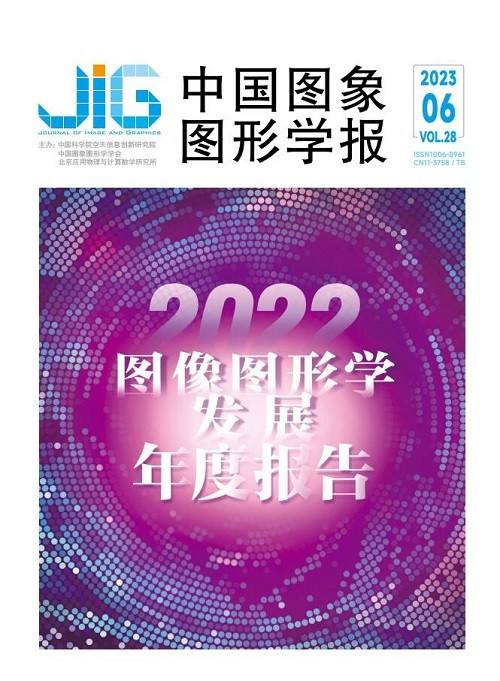
元宇宙下的智慧博物馆研究进展
耿国华1, 贺小伟1,2, 王美丽3, 袁庆曙4, 尹国军5, 许阳1, 潘志庚6(1.西北大学信息科学与技术学院, 西安 710127;2.西安市分子影像与智能感知重点实验室, 西安 710127;3.西北农林科技大学信息工程学院, 杨凌 712100;4.杭州师范大学信息科学与工程学院, 杭州 311121;5.淮阴工学院设计艺术学院, 淮安 223003;6.南京信息工程大学人工智能学院, 南京 210044) 摘 要
中华民族拥有五千年的灿烂文化,各民族在各个历史阶段创造出的文物是中华民族繁荣昌盛的见证。博物馆作为文物收藏、文化展示的公共平台,在我国文化传承的过程中起着重要作用,随着科技的发展,当前博物馆已经步入智慧化建设时代。本文对数字化采集技术、文物真实感重建技术、虚拟结合智能交互和智慧平台建设等关键技术进行了对比分析,对诸多数字博物馆与艺术机构的案例进行了比较研究,对在元宇宙下建设智慧博物馆的发展趋势进行了展望。元宇宙技术融入智慧博物馆建设,是把握新一轮科技革命和产业变革新机遇的战略方向,有利于博物馆的数字化建设,有利于保护和发展中国优秀传统文化,对促进文化繁荣、构筑文化自信以及建设文化强国具有重要意义。
关键词
Research progress on wisdom museums in metaverse
Geng Guohua1, He Xiaowei1,2, Wang Meili3, Yuan Qingshu4, Yin Guojun5, Xu Yang1, Pan Zhigeng6(1.School of Information Science and Technology, Northwest University, Xi'an 710127, China;2.Xi'an Key Laboratory of Molecular Imaging and Intelligent Perception, Xi'an 710127, China;3.College of Information Engineering, Northwest A&F University, Yangling 712100, China;4.School of Information Science and Technology, Hangzhou Normal University, Hangzhou 311121, China;5.School of Art and Design, Huaiyin Institute of Technology, Huaian 223003, China;6.School of Artificial Intelligence, Nanjing University of Information Science & Technology, Nanjing 210044, China) Abstract
The preservation and exhibition of cultural relics have been concerned more nowadays, in which number of worldwide museums is even higher at about 55 097 and all the artefacts have been melted into. In China, total number of museums can be reached to 6 183, and it has involved 108 million state-owned movable cultural relics(sets) and 767 000 immovable cultural relics nationwide recently. Traditional museums are mainly focused on display cases, pictures, and other related audio-visual materials. Current digitization of cultural objects is beneficial to optimize traditional methods further. First, standard and consistent preservation can be introduced to alleviate natural-derived irreversible damage challenges to cultural objects. Next, it facilitates diverse ways of displaying cultural relics, which can enhance public awareness for appreciate heritage in a holistic, multi-angle, and three-dimensional manner. In recent years, the development of information technology has harnessed the emergence of many new conservation techniques and ways of displaying heritage, such as deep learning based 3D reconstruction and intelligent museums-oriented metaverse technologies of virtual reality. The digitization of museums has been launched globally in the context of digitization of collection resources since 1990s. But, the following digital museums are still challenged to deal with the problem of museum-across integrated resources. Such worldwide research projects for intelligent museums construction has been called for further. The goal of a smart museum is aimed to create a feasible intelligent ecosystem for museum-relevant domains. We review global-contextual technologies, in which four category of such key technologies in relevance to digital acquisition, heritage realism reconstruction, virtual-intelligent-integrated interaction, and smart platform construction. For digital acquisition of cultural relics, we illustrate and analyze the two most common types of methods in related to 3D scanning and close-up photogrammetry. For the realistic reconstruction technology of cultural relics, geometric processing and deep learning-based methods are focused on in terms of 3D reconstruction model analysis. For virtual-intelligent-integrated interaction, a variety of interaction methods are demonstrated in related to such aspects of multimodality, gesture, and handling. For the construction of smart platforms, we summarize some emerging technologies, and the final artistic results are described and achieved. The case study analysis is based on such famous multination museums of the Louvre Museum in France, the Hermitage Museum in Russia, the Palace Museum in Beijing and other related world-renowned museums. We sort out that the commonly-used construction process of smart museums for cultural relics through collection of digital information, three-dimensional reconstruction, and the integration of multiple virtual interaction. The consensus is focused on improving conservation measures and inherit culture. At the same time, potential metaverse technology can be used to build metaverse museum platforms further. Finally, modernizing museums analysis is focused on and its relevant tools and technologies has been focused on metaverse-related technologies. In the future, such emerging metaverse technologies can be used to predicted and integrated into the construction of smart museums as well like blockchain technology, computing and storage, artificial intelligence, and brain-computer Interface. It is focused on the integrated and intelligent construction of museums, and more ultimate and immersive experience can be melted into visitors experiences. To sum up, to promote the development and preservation of global civilization, metaverse technology-integrated intelligent museums are required for its integrated construction in relevance to human cognitive abilities and behavioral patterns.
Keywords
|



 中国图象图形学报 │ 京ICP备05080539号-4 │ 本系统由
中国图象图形学报 │ 京ICP备05080539号-4 │ 本系统由